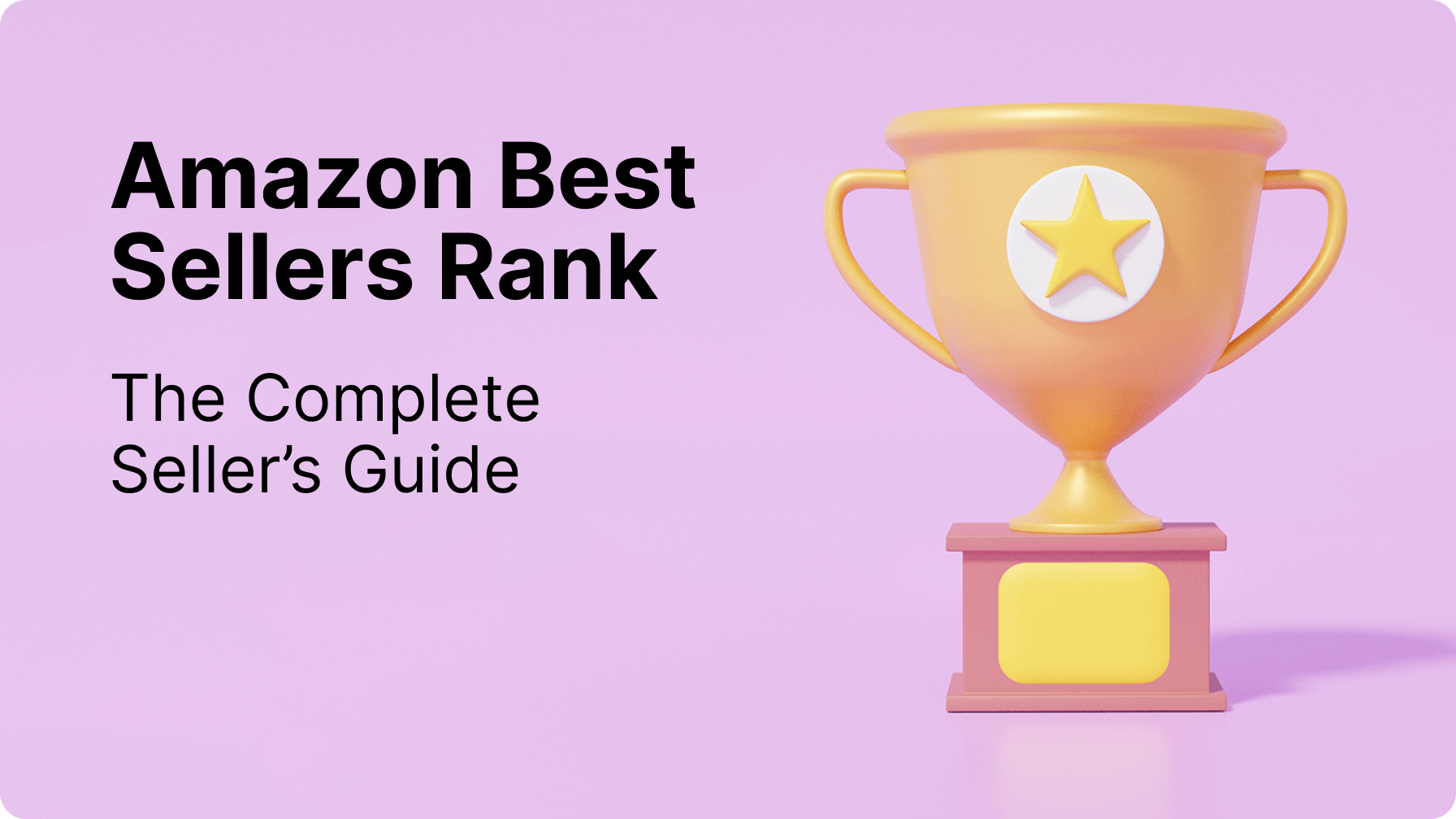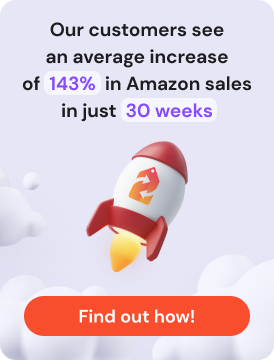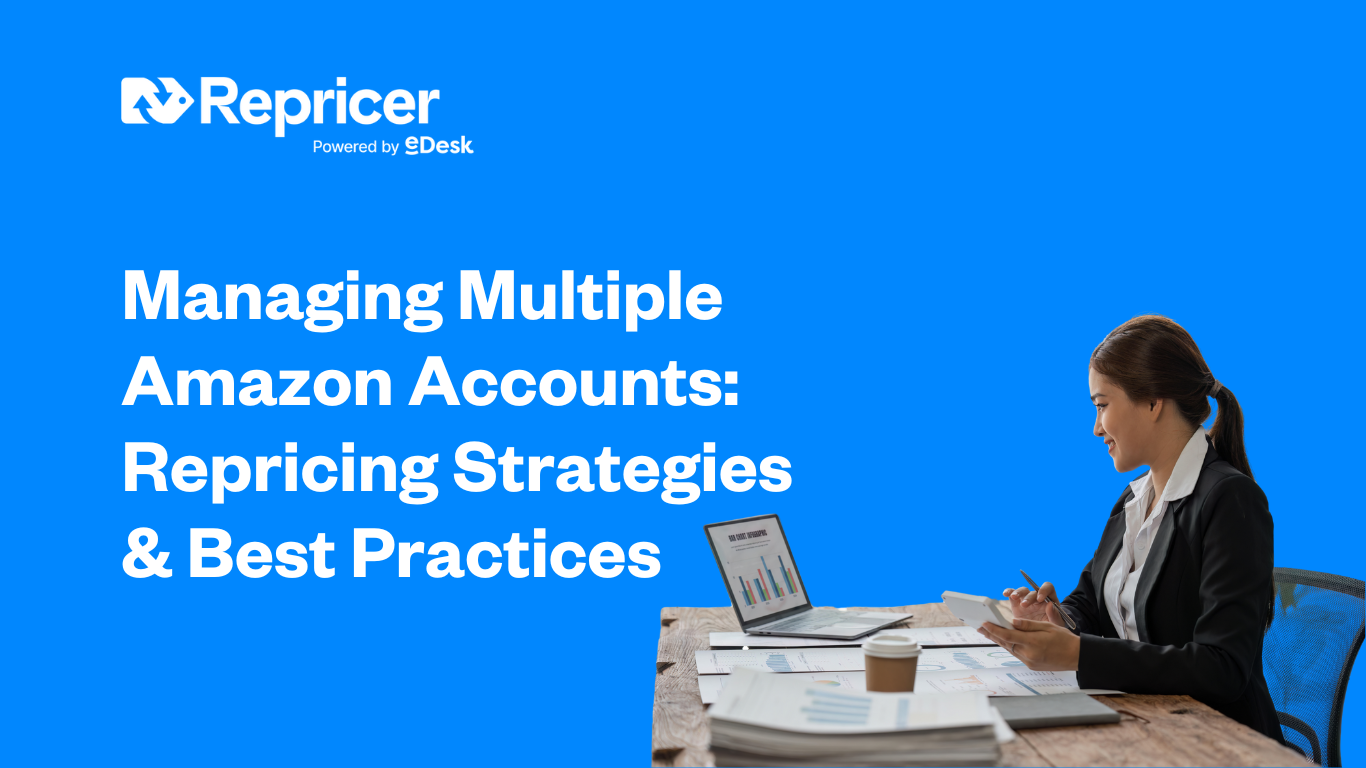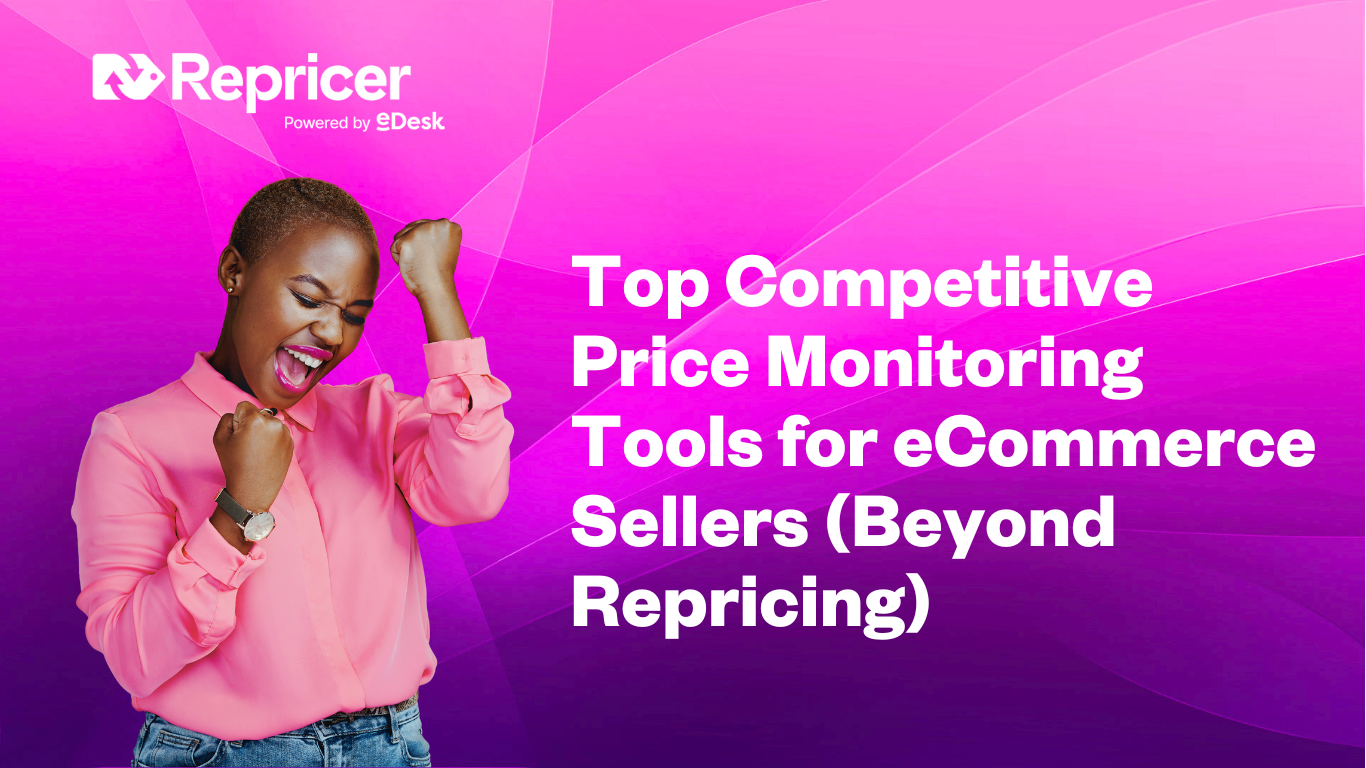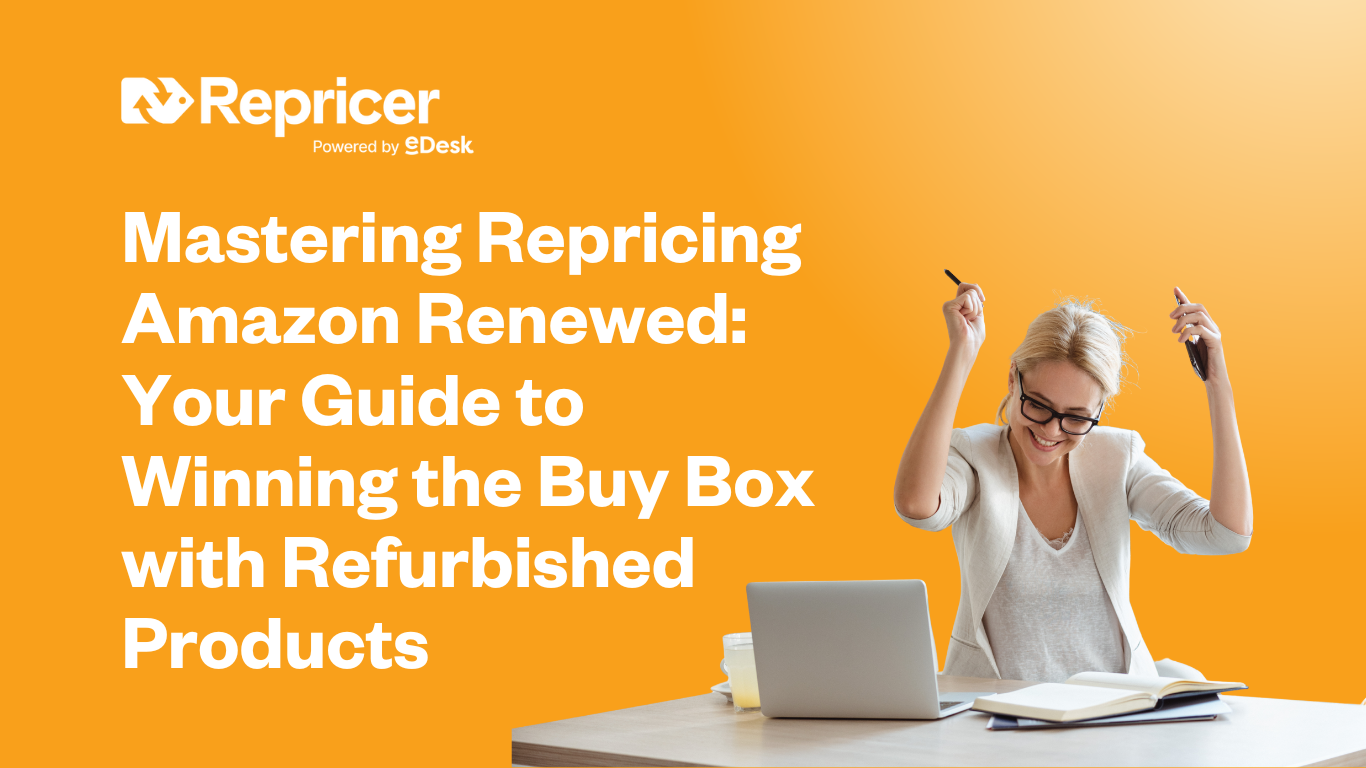Amazons Mission ist es, „Verbrauchern zu helfen, alles zu finden, zu entdecken und zu kaufen, und Unternehmen und Autoren von Inhalten zu befähigen, ihren Erfolg zu maximieren“. Und das gelingt dem Unternehmen ganz offensichtlich, denn Amazon ist der größte Online-Händler der Welt.
Es ist beeindruckend, wie groß Amazon tatsächlich ist. Das Unternehmen verkauft derzeit mehr als 350 Millionen Produkte in 36 Produktkategorien. Die Kunden haben eine große Auswahl, wenn es darum geht, genau das Richtige zu finden. Wenn Sie davon träumen können, ist es wahrscheinlich bei Amazon zu haben!
Aber wie behält Amazon den Überblick über alle Artikel, die auf seiner Plattform zum Verkauf stehen? Dies geschieht, indem jeder Artikel, der mindestens einmal verkauft wurde, mit einem Ranking-System namens Best Sellers Rank (BSR) kategorisiert wird.
Für Amazon-Verkäufer ist BSR ein leistungsstarkes Werkzeug, das Ihnen hilft zu verstehen, wie gut Ihre Produkte abschneiden und das Verkaufspotenzial zu messen. Wenn Sie die BSR verstehen, wissen Sie auch, wie Sie die BSR für Ihr Geschäft nutzen können.
Das Beste daran ist, dass Sie kein ‚Bestseller‘ sein müssen, damit Ihren Produkten ein BSR zugewiesen wird! Sie müssen ein Produkt nur einmal verkauft haben, damit es ein Ranking erhält. Je mehr es verkauft wird, desto mehr verändert sich das Ranking dieses Produkts, so dass Sie ein genaueres Bild davon bekommen, wo Ihre Produkte im Vergleich zur Konkurrenz stehen.
Sehen wir uns an, was BSR ist, wie es funktioniert und wie Sie es nutzen können, um Ihr Amazon-Geschäft zu vergrößern und gleichzeitig Ihre Rentabilität zu erhöhen.
Was ist der Amazon Best Sellers Rank?
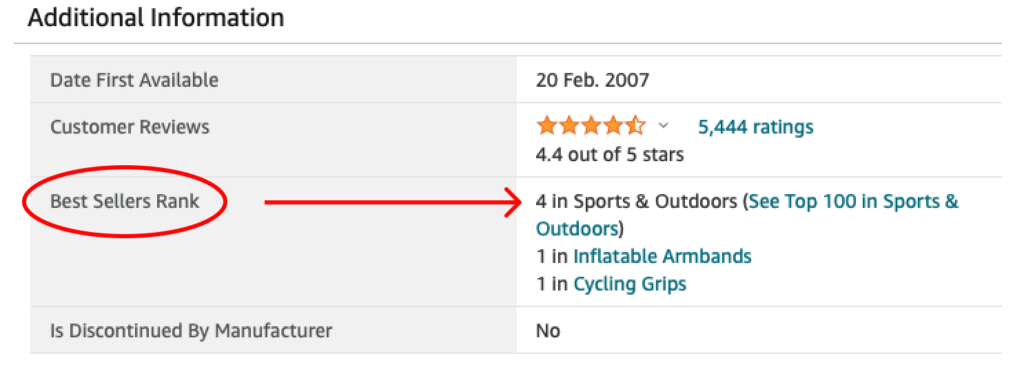
Der Amazon Best Sellers Rank (BSR) ist eine Bewertung, die für fast jedes Produkt im Amazon-Katalog vergeben wird. Jedes auf Amazon erhältliche Produkt, das mindestens einmal verkauft wurde, erhält einen BSR.
Die BSR ist ein Indikator dafür, wie gut ein Produkt auf Amazon abschneidet. Je besser das Produkt abschneidet, desto niedriger wird seine Nummer sein. Ein Produkt mit einer hohen Leistung liegt beispielsweise auf Platz 200, während ein Produkt mit einer weniger guten Leistung auf Platz 2.000 liegt.
Das heißt, Produkte mit geringen Umsätzen haben hohe BSRs und Produkte mit hohen Umsätzen haben niedrige BSRs. Je mehr Verkäufe Sie machen, desto niedriger wird Ihre BSR.
Die Produktleistung ist auf die Produkte in ihrer Kategorie beschränkt. Das bedeutet, dass Sie die BSR eines Produkts in der Kategorie Haushalt & Küche nicht mit der eines Produkts in der Kategorie Haushalt & Baby vergleichen können. Da es sich um zwei getrennte Kategorien handelt, werden ihre Produkte im Vergleich zu anderen Produkten in derselben Kategorie bewertet.
Aus diesem Grund können Produkte mehrere BSRs haben, wenn das Produkt in mehreren Kategorien gelistet ist. In jeder Kategorie zeigt das Ranking eines einzelnen Produkts an, wie gut das Produkt innerhalb der Kategorie abschneidet.
Unterkategorien können bei der Analyse des Rankings eines Produkts besonders nützlich sein. Die Bestsellerlisten der Unterkategorien geben Ihnen detailliertere Informationen darüber, ob ein Produkt im Vergleich zu seinen direkten Konkurrenten gut abschneidet als die breiteren Bestsellerlisten der Topkategorien.
Es ist auch erwähnenswert, dass die BSR von Amazon stündlich schwankt, d.h. je öfter ein Produkt verkauft wird, desto mehr kann sich sein Ranking ändern. Auf diese Weise ist die BSR eine äußerst wertvolle Kennzahl für Amazon-Verkäufer, denn sie kann Sie über die Nachfrage nach einem bestimmten Produkt informieren. Dies hilft Ihnen in der Recherchephase bei der Entscheidung, welche Produkte Sie in Ihrem Amazon-Shop verkaufen möchten.
Sehen wir uns an, wie die BSR berechnet wird.
Wie wird der Bestseller-Rang berechnet?
Wie die meisten Algorithmen wird auch die BSR auf der Grundlage proprietärer Metriken berechnet. Wir wissen also nicht genau, wie Amazon seine Berechnungen vornimmt, aber wir wissen, dass die Verkäufe der wichtigste Faktor für die Metrik sind. Dies ist also ein Fall, in dem Nutzerrezensionen nicht ins Spiel kommen.
Mehrere Schlüsselfaktoren werden bei der Erstellung der einzelnen Rankings berücksichtigt. Sie umfassen:
- Aktuelle und vergangene Verkäufe
- Ähnliche Produkte von Mitbewerbern
- Preisgestaltung, einschließlich Verkäufe und Werbeaktionen
Da das Ranking stündlich aktualisiert wird, ist es wahrscheinlich, dass Ihr Ranking eine niedrigere Zahl als das Ihrer Konkurrenten ist, wenn Sie in der letzten Stunde mehr von demselben Produkt verkauft haben als Ihr Konkurrent (zur Erinnerung: je niedriger die Zahl, desto besser das Ranking!).
Wir sagen „wahrscheinlich“, weil auch die historischen Verkäufe berücksichtigt werden. Nur weil Sie in der letzten Stunde viele Produkte verkauft haben, heißt das nicht, dass Sie Ihren Konkurrenten übertreffen werden, wenn dieser in der Vergangenheit mehr Produkte verkauft hat als Sie. Dadurch, dass neben den aktuellen Verkäufen auch die historischen Verkäufe berücksichtigt werden, bleibt das Ranking fair und konsistent.
Wie unterscheidet sich der Amazon BSR vom organischen Rang?
Es ist wichtig zu wissen, dass Ihr Amazon BSR unabhängig von Ihrem organischen Ranking ist, da das organische Ranking bestimmt, wo Ihr Produkt erscheint, wenn jemand nach diesem Produkt auf Amazon sucht.
BSR wird in den Suchergebnissen von Amazon nicht berücksichtigt. Diese werden ausschließlich durch das organische Ranking bestimmt, das auf Schlüsselwörtern basiert. Es ist also wichtig, dass Sie unabhängig von Ihrer BSR die richtigen Schlüsselwörter in Ihren Produkttiteln und -beschreibungen verwenden, um möglichst viele Kunden zu erreichen. Dies wird Ihnen helfen, ein höheres organisches Ranking bei Amazon zu erreichen.
Andererseits geht es bei BSR nur um den Umsatz, nicht darum, welche Schlüsselwörter Sie verwenden. Dennoch sind die beiden Rankings miteinander verbunden, da Ihre Verkäufe darauf beruhen, wie gut Ihre Schlüsselwörter bei der Suche abschneiden. Je höher Ihre Produkte bei der Suche im Vergleich zu denen Ihrer Konkurrenten auftauchen, desto höher kann Ihre BSR im Vergleich zu der Ihrer Konkurrenten sein.
Paradoxerweise ist es möglich, bei der organischen Suche ein umsatzstärkstes Produkt zu haben, aber nicht die Nummer eins der BSR zu sein. Das liegt daran, dass Amazon die Relevanz von Schlüsselwörtern über die Platzierung als Bestseller in der Suche stellt.
Aus diesem Grund ist die BSR ein besserer Prädiktor für das Verkaufsvolumen und die Häufigkeit, mit der ein Produkt verkauft wird, als für seine allgemeine Beliebtheit.
Wie profitiert der Verkäufer vom Bestseller-Ranking?
Einblicke in die BSR können Verkäufern in mehrfacher Hinsicht zugute kommen.
1. Produktforschung
Amazon-Verkäufer müssen wissen, welche profitablen Produkte sie verkaufen können. BSR kann neuen Verkäufern und erfahrenen Verkäufern dabei helfen, Einblicke in Produkttrends zu gewinnen und herauszufinden, welche Produkte sie in ihren Amazon-Shops anbieten möchten.
Für neue Verkäufer, die unsicher sind, welche Produkte sie verkaufen sollen, kann die BSR ein Anhaltspunkt dafür sein, welche Produkte sich bei Amazon besser verkaufen. Anhand der BSR können Sie sehen, welche Produkte sich am meisten verkaufen (sie haben niedrigere BSR-Zahlen) und dann entscheiden, ob Sie mit dem Verkauf dieser Produkte mit etablierten Verkäufern konkurrieren möchten. So erhalten Sie einen Anhaltspunkt, welche Produkte am meisten nachgefragt werden.
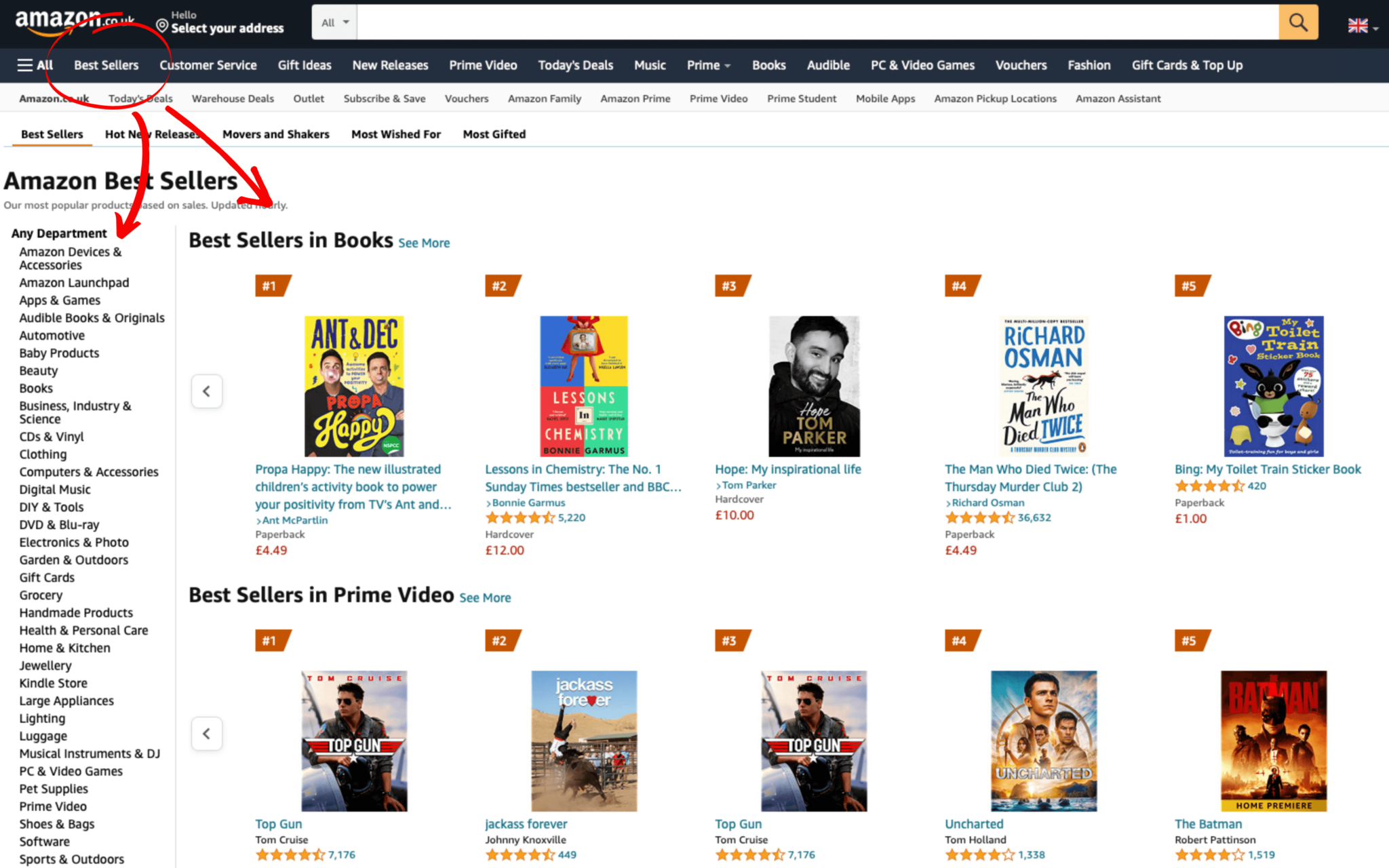
Für erfahrenere Verkäufer, die ihre Produktlinien bereits etabliert haben, kann Amazons Bestseller-Rang dabei helfen, Konkurrenten zu überwachen, um zu sehen, welche von ihnen (wenn überhaupt) ein höheres Ranking haben als Sie.
Wenn ein Verkäufer mit ähnlichen Produkten eine niedrigere BSR hat als Sie, könnte dies ein Zeichen dafür sein, dass Sie Ihre Schlüsselwörter anpassen müssen, um Ihre Sichtbarkeit in den Suchergebnissen zu erhöhen und mehr Marktanteile zu erobern.
2. Bestimmung der Produktverkaufsleistung
Sie können BSR auch verwenden, um die Verkaufsleistung eines bestimmten Produkts zu ermitteln. Insbesondere könnte es Sie interessieren, wie oft ein Produkt auf Amazon verkauft wird.
Sie können zum Beispiel damit beginnen, Ihre eigene BSR zu nehmen und sie mit der Anzahl der Verkäufe zu vergleichen, die Sie in diesem Monat gemacht haben. So erhalten Sie eine ungefähre Vorstellung davon, wie viele Verkäufe Sie tätigen müssen, um diese bestimmte BSR zu erreichen.
Dann können Sie sich historische Daten ansehen (z.B. von vor 12 Monaten) und ausrechnen, wie viele Verkäufe Sie getätigt haben, um die BSR des letzten Jahres zu erreichen.
So erhalten Sie eine Vergleichsbasis für andere Produkte mit einem ähnlichen Umsatzvolumen. Sie können sich dann andere Produkte mit einer ähnlichen BSR ansehen, um eine Vorstellung davon zu bekommen, wie viele Verkäufe Sie pro Monat machen müssen, um eine bestimmte BSR zu erreichen.
Dies kann sehr hilfreich sein, wenn Sie entscheiden, welche anderen Produkte Sie verkaufen möchten, und wenn Sie Ihre Konkurrenz im Auge behalten wollen. Wenn ein Konkurrent eine höhere BSR für dieselben Produkte hat, wissen Sie, dass er höhere Mengen verkauft. Wenn Sie also seine BSR kennen, können Sie entscheiden, ob Sie Ihre Marketingtechniken anpassen müssen, um besser mit ihm konkurrieren zu können.
Verbessern Sie Ihren Amazon-Bestseller-Rang
Wenn Ihr Produkt eine BSR zwischen 1 und 100 erreicht, wird es in den Bestsellerlisten aufgeführt. Wenn Ihre BSR jedoch nicht dort ist, wo Sie sie haben möchten (oder wo Sie glauben, dass sie sein könnte ), müssen Sie die Verkäufe steigern, um Ihren Wert zu verbessern.
Sobald Sie Ihre BSR ermittelt haben, möchten Sie sie vielleicht verbessern. Es gibt mehrere Strategien, die Sie anwenden können, um eine niedrigere (bessere) BSR zu erreichen.
1. Überprüfen Sie die Schlüsselwörter in Ihrem Produkttitel und Ihrer Beschreibung
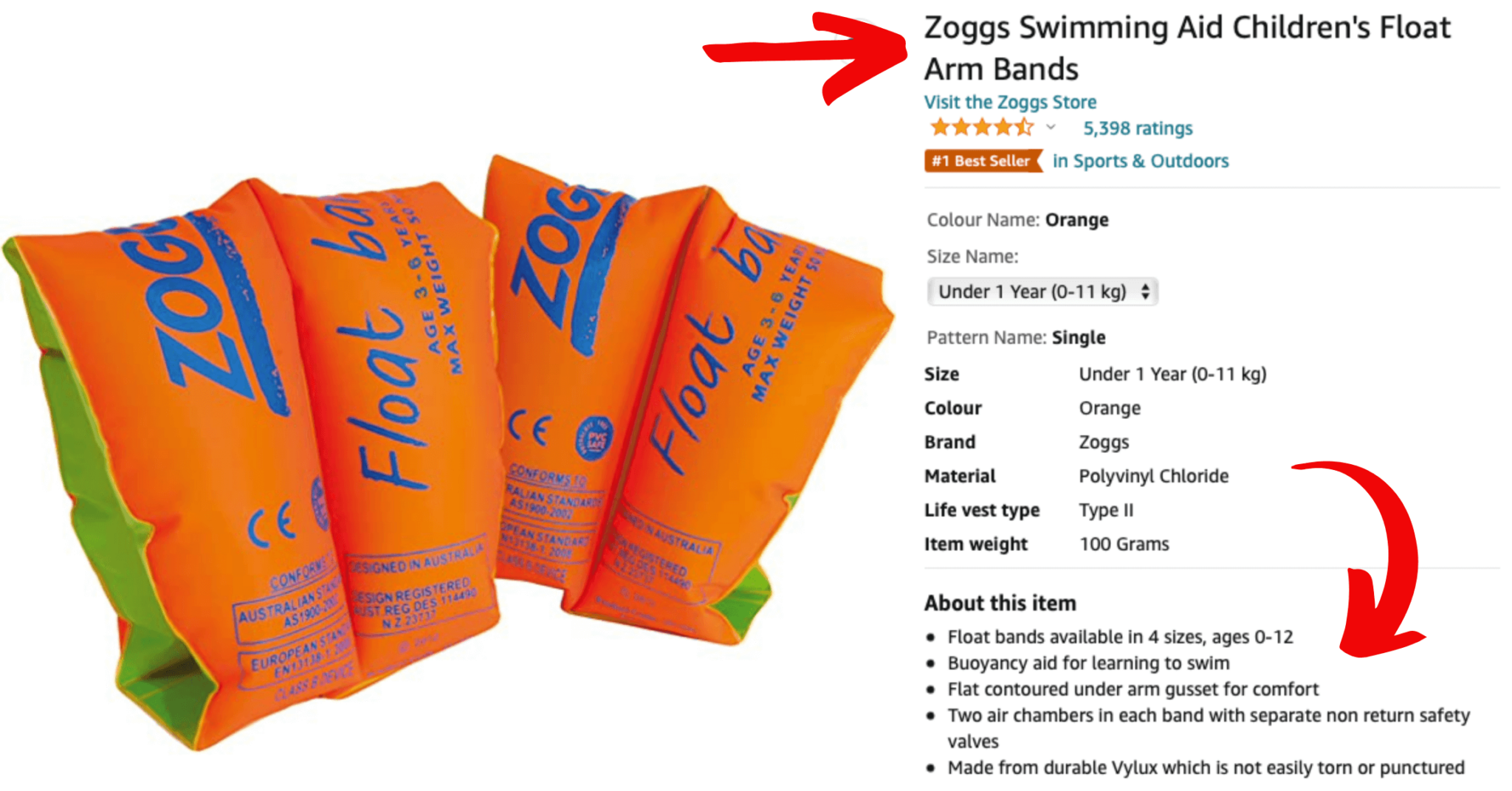
Die Verwendung der richtigen Schlüsselwörter ist entscheidend. Schlüsselwörter bestimmen die Suchergebnisse auf Amazon. Sie sollten also sicherstellen, dass Sie die richtigen Schlüsselwörter verwenden, damit Ihr Produkt bei der Suche ganz oben erscheint.
Das bedeutet, dass Sie die Schlüsselwörter in Ihrem Produkttitel und in der Produktbeschreibung aktualisieren müssen, da beide in die Suchergebnisse einfließen. Ihre Schlüsselwörter sollten für die Beschreibung des Produkts, das Sie verkaufen, relevant sein.
2. Investieren Sie in hochqualitative Bilder
Online-Shopping ist ein visuelles Erlebnis. Kunden möchten ein genaues Bild von dem sehen, was sie kaufen.
Wenn Sie in hochwertige Produktbilder investieren, die eine Auswahl von Produktfotos aus verschiedenen Blickwinkeln und mit professionellen Hintergründen zeigen, haben Sie die besten Chancen, dass Ihre Produkte auffallen und von den Kunden in den Warenkorb gelegt werden.
Videos können auch in dieser Hinsicht helfen. Sie können Ihr Produkt zum Leben erwecken, indem sie dem Kunden genau zeigen, wie es in der Praxis funktioniert, und so das Kundenerlebnis verbessern.
3. Nutzen Sie Amazon FBA und Prime
Amazon bevorzugt Verkäufer, die seinen Fulfillment-Service nutzen. Wenn Sie dies tun, sind Sie auch berechtigt, Prime für Ihre Angebote anzubieten, was Ihr Angebot für mehr Kunden attraktiv macht.
Sowohl FBA als auch Prime genießen das Vertrauen vieler Amazon-Kunden. Wenn Sie also diese Optionen hinzufügen, können Sie Ihre Verkäufe steigern, was wiederum zu einer höheren BSR führen wird.
4. Halten Sie Ihre Preise wettbewerbsfähig
Eine todsichere Methode, um sich gegen Ihre Konkurrenten durchzusetzen, ist es, Ihre Preise konkurrenzfähig zu halten und sie an die Preise anzupassen, die andere Verkäufer für dieselben Produkte anbieten (oder sie sogar zu unterschreiten). Nächster Punkt: Die Preisgestaltung ist so wichtig, dass wir der Meinung sind, dass sie einen eigenen Abschnitt verdient hat!
Die Bedeutung der Preisgestaltung für den Bestseller-Rang
Es ist ein Fehler, die Bedeutung der Preisgestaltung zu vernachlässigen, wenn Sie Ihre BSR verbessern wollen. Viele Verkäufer schauen nur auf das Umsatzvolumen und berücksichtigen nicht die entscheidende Rolle, die die Preisgestaltung bei der Erzielung besserer Umsätze spielt.
Wie wir bereits festgestellt haben, können Sie Ihre BSR verbessern, indem Sie mehr verkaufen. Und um mehr zu verkaufen, müssen Sie Ihren Konkurrenten gegenüber am Ball bleiben! Aber es gibt viele Gründe, warum ein Kunde lieber bei Ihnen als bei einem Konkurrenten kaufen sollte.
Wir haben bereits Faktoren wie Schlüsselwörter in der organischen Suche, Produktbilder und Prime-Angebote erwähnt, aber ein weiterer wichtiger Schlüsselfaktor, der darüber entscheidet, ob ein Kunde bei Ihnen oder bei einem Mitbewerber einkauft, ist der Preis.
Einfach gesagt: Kunden wollen immer Geld sparen. Wenn jemand den gleichen Artikel anbietet, aber für etwas weniger, wird der Kunde fast immer das billigere Produkt wählen.
Aber wie können Sie bei einer so großen Produktkategorie auf Amazon sicherstellen, dass Sie immer wettbewerbsfähig bleiben? Schließlich können die Preise je nach Marktnachfrage, Verfügbarkeit in der Lieferkette und anderen volatilen Faktoren schwanken.
Hier kommt die Preisanpassungssoftware ins Spiel. Diese intelligente Software nimmt Ihnen das Rätselraten bei der Preisgestaltung ab, denn dank ihrer ausgefeilten Technologie gleicht sie ständig mit Ihren Konkurrenten ab, um sicherzustellen, dass Sie die Preise für Ihre Produkte angemessen gestalten.
Repricing bedeutet nicht, dass Sie Ihre Preise zu Ihrem Nachteil senken. Sie können bestimmte Regeln festlegen, darunter auch Mindestpreise, um sicherzustellen, dass Sie wettbewerbsfähig bleiben, ohne Ihre Gewinnspannen zu gefährden.
Die Art und Weise, wie Sie Ihre Produkte bepreisen, ist auch ausschlaggebend dafür, ob Sie die Amazon Buy Box gewinnen werden. Die Buy Box ist bei Verkäufern sehr begehrt, denn fast 85% der Verkäufe gehen an diejenigen, die in der Buy Box sind. Um die Buy Box zu erhalten, berücksichtigt der Algorithmus von Amazon Faktoren wie Erfüllung, Kundenfeedback, Bestandstiefe und, ja, den Preis. Deshalb ist eine Preisanpassung ein Muss!
Alles in allem können wir sehen, warum die Preisanpassung so wichtig ist und wie sie sich auf die Verbesserung Ihres Amazon Bestseller-Rangs auswirkt. Je besser die Preise Ihrer Artikel sind, desto wahrscheinlicher ist es, dass Sie die Buy Box gewinnen und desto mehr werden Sie verkaufen.
Denken Sie daran, ein größeres Verkaufsvolumen = bessere BSR.
Nutzen Sie den Amazon-Bestseller-Rang zu Ihrem Vorteil
Einige Verkäufer mögen den Amazon Best Sellers Rank als eitle Kennzahl abtun. Aber das ist ein Fehler, denn Sie verpassen die Gelegenheit, die Einblicke zu nutzen, um Ihre Positionierung und Ihren Gewinn zu verbessern.
Wenn Sie sich die Zeit nehmen, Ihr Ranking und das Ihrer Konkurrenten zu verstehen, können Sie Ihre BSR und damit auch Ihren Gewinn verbessern. Wenn Sie die BSR nutzen, um Ihr Produktranking auf Amazon zu verbessern, werden Sie ein deutlicheres Wachstum und mehr Erfolg in Ihrem Amazon-Geschäft erzielen – und das ist etwas, was jeder Verkäufer anstrebt!
Wenn Sie auch daran interessiert sind, Ihre Umsätze und Erträge zu steigern, dann buchen Sie jetzt Ihren kostenlosen 14-Tage-Test.
